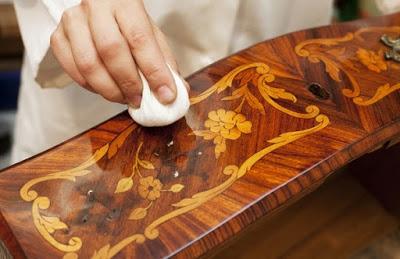
If you have recently given your antique or vintage furniture to a professional for restoration, you might be wondering how the expert would accomplish the task. If curiosity has got the better of you already, here are a few things explaining how experienced furniture makers perform it:
- In order to keep the original finish intact, most furniture makers apply a wax on antique furniture. Doing so eliminates old dirt as well as makes the piece look attractive. It also removes smudges and streaks, in addition to making the dull appearance of the furniture go away.
- Your antique furniture may also be in need of cleanup prior to application of wax. In that case, its surface would be cleaned using a good quality polish revive. There are many polish reviving solutions out there that produce excellent results.
- It can also be possible that your furniture item has some minor woodworm damage. The professional would first use a woodworm killing solution for destroying the insects within the wood, and then begin the restoration work. The holes caused by woodworm would be filled up using some form of wax.
- In case there are any paint marks on the piece, the professional will probably use methylated spirit for removing it. After applying the solution on the marks, he or she would scrape them off with a piece of softwood.
- Grease or oil can also accumulate over time on antique furniture, it is nothing unusual. To eliminate the buildup entirely, the professional will initially strip the old finish off with a polish stripper or paint. He or she would then neutralise it with white spirit.
- For removing dents, the most common method used by professional furniture restorers involves swelling the dent by applying heat with an iron. A large cloth is kept underneath the iron for preventing accidental damage to the wood. Once the dent disappears, the surface is sanded and re-polished.
- Ink stains on any antique furniture piece are usually removed using some mildly acidic solution. In case of tough stains, an expert may even utilise very weak hydrogen peroxide solution. After that, a good wood stain is applied for darkening the area and matching its color to that of the surrounding.
Be it a Stag or Ercol restoration or any other now you know a number of the important steps involved in restoring antique furniture. If you wish to research the topic further, look for relevant articles over the Internet.

